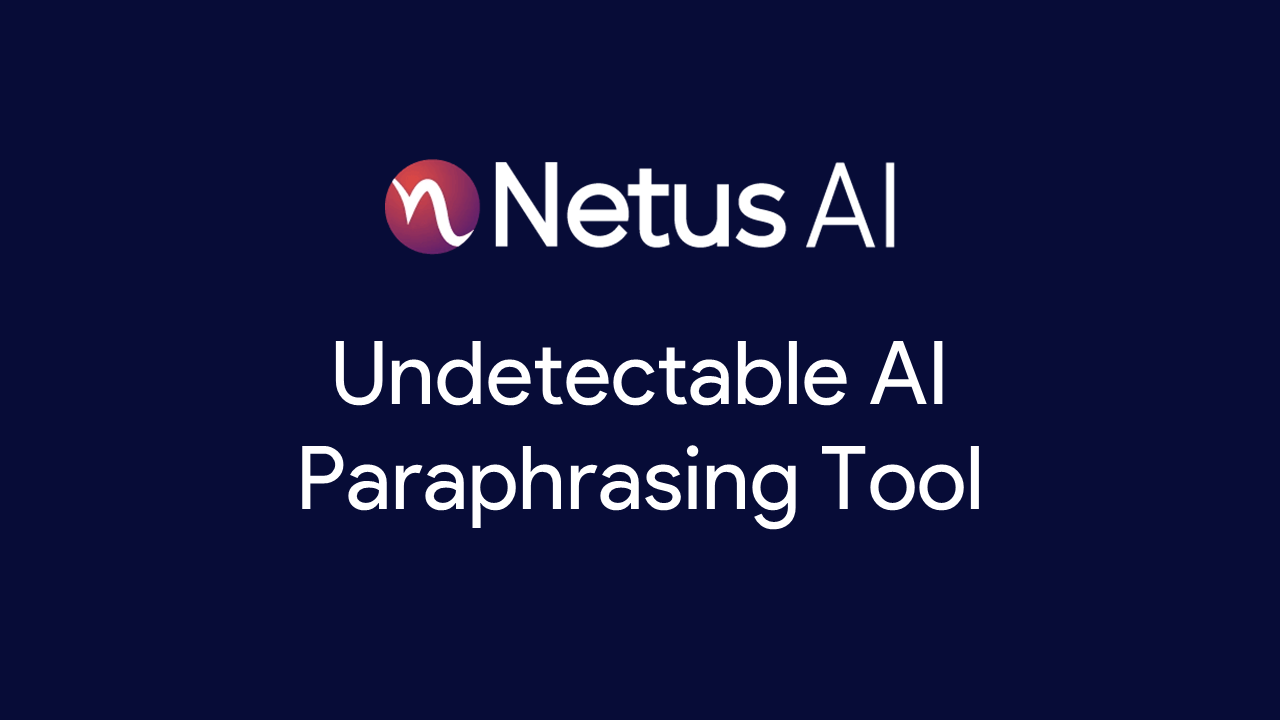NetusAI
NetusAI
Blog Article

How Accurate is GPTZero in Detecting AI-Generated Text?
In the realm of content creation, AI-driven paraphrasing tools like NetusAI have become indispensable. NetusAI transforms AI-generated content into human-like writing, providing features such as an AI bypasser to avoid detection and an AI detector to distinguish between human-written and AI-generated text with high accuracy. However, the effectiveness of AI detection systems like GPTZero has become a crucial topic for educators, writers, and editors.
Understanding GPTZero's Detection Mechanism
GPTZero is designed to detect AI-generated text by analyzing two main metrics: perplexity and burstiness. Perplexity measures the predictability of the text, with AI-generated content often being more predictable than human-written text. Burstiness examines the variation in sentence structure, which tends to be more varied in human writing. These metrics help GPTZero differentiate between human and AI-generated text, aiming to provide a reliable detection tool.
Analyzing GPTZero Accuracy
One of the central questions for users is how accurate is GPTZero in its detection capabilities. The Netus.ai blog outlines that while GPTZero performs effectively with longer texts, it sometimes struggles with shorter pieces, leading to misclassifications. This inconsistency is particularly concerning for users who need reliable detection for all types of content lengths.
Challenges in Detecting AI-Generated Content
AI-generated content presents unique challenges in detection due to its variability. GPTZero's method of analyzing perplexity and burstiness works well for longer texts where patterns are more discernible. However, shorter texts often lack the necessary complexity, making it difficult for the tool to accurately assess these metrics. This limitation raises important questions about how accurate is GPTZero in practical, everyday use.
Practical Implications for Educators and Content Creators
For educators and content creators, the reliability of detection tools like GPTZero is vital. In academic settings, accurate detection of AI-generated content ensures the integrity of student work. Similarly, content creators need to verify the originality of their work to avoid unintentional plagiarism. Given GPTZero's mixed results, it is essential to understand its limitations and consider additional verification methods.
Comparing GPTZero with Other Detection Tools
When assessing the accuracy of AI detection tools, it is useful to compare their performance. GPTZero's focus on perplexity and burstiness provides a specific approach, but its limitations with shorter texts suggest that other tools might be more reliable. For instance, tools like Originality.ai, as mentioned in the Netus.ai blog, may offer more consistent results across different text lengths, providing a broader scope of detection capabilities.
The Role of Advanced Algorithms
Advanced algorithms play a critical role in the effectiveness of AI detection tools like GPTZero. These algorithms must continuously evolve to keep up with the sophistication of AI-generated content. The current performance issues with shorter texts indicate that there is room for improvement in GPTZero's algorithms. Ongoing development and refinement are necessary to enhance accuracy and reliability, ensuring that detection tools can adapt to new challenges.
Exploring Alternatives to GPTZero
Given the mixed performance of GPTZero, exploring alternative detection tools is prudent. Tools like Originality.ai might offer better accuracy and reliability, especially for shorter texts. By comparing different tools, users can identify the most effective solutions for their specific needs, ensuring that content remains original and authentic.
Conclusion
The question how accurate is GPTZero is crucial for anyone relying on AI detection tools to maintain content integrity. While GPTZero offers valuable insights and performs well with longer texts, its limitations with shorter pieces highlight the need for continuous improvement. Understanding these dynamics is essential for educators, writers, and editors who must navigate the complexities of AI-generated content. As detection tools evolve, their accuracy and reliability will determine their effectiveness in ensuring content authenticity and originality.
Report this page